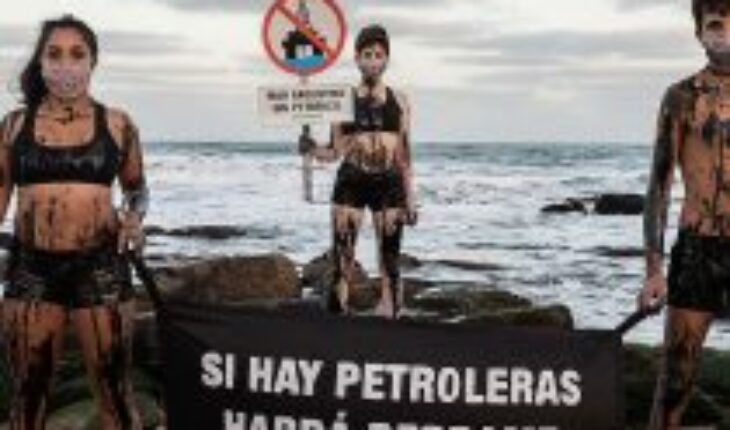The environmental organization Greenpeace presented in Buenos Aires the documentary “Por acá no” about the “tragedy” that it considers the Argentine Sea will face as a result of the “offshore” oil exploitation approved by the Argentine Government and whose progress is in the hands of Justice.
Greenpeace celebrated the preview of its first documentary about what it considers “one of the greatest threats” to the Argentine Sea and that will premiere on Greenpeace Argentina’s YouTube channel this April 20 and will be broadcast on History Channel on May 5.
The presentation was held on Friday night with the presence of Argentine actors Natalie Perez and Chino Darín, protagonists of the film, who told their experience in production, along with references from Greenpeace and history Channel, in addition to the testimony of the host Diego Poggi through a video, prior to the screening of the documentary.
For the preview, the actors visited the Greenpeace ship “Arctic Sunrise”, which is in Buenos Aires after making a tour of the entire Atlantic coast from the southern city of Ushuaia since last March, in a “crusade” against illegal and uncontrolled fishing, seismic exploration of hydrocarbons and plastic pollution of the seas, and that is open to the public during this weekend.
The Greenpeace documentary began filming from December 30, 2021, when the Argentine Ministry of environment approved the seismic exploration of “offshore” hydrocarbons in three blocks of the North Argentine Basin (CAN) of the Argentine Sea, located between 307 and 443 kilometers from the coast of Mar del Plata, the largest resort on the Atlantic coast of Argentina and which lives on tourism and fishing.
Equinor is the operator of the three areas, although in the main block, CAN 100 —of 15,000 square kilometers—, it is associated with YPF, controlled by the Argentine State, and Shell; and in another, CAN 114, only to YPF.
The 30-minute documentary travels through various cities on the Argentine coast to expose problems such as fauna exposed to acoustic bombardment and the high probability of oil spills, with aerial and terrestrial shots that portray coastal biodiversity and with the testimony of biodiversity experts and coastal communities.
“The impacts of the oil industry endanger all species in our region. Statistics show that in the event of an oil disaster, containment and recovery tasks only achieve that between 10% and 15% of the total volume spilled is recovered,” Diego Salas, Greenpeace’s program director, said in the statement.
Salas recalled that Greenpeace is also part of an environmental class action lawsuit against the Argentine State, the Ministry of Environment and the Ministry of Energy to prevent offshore exploration in the Argentine Sea.
The lawsuit led to the ruling of a judge of first instance that granted the precautionary measure, then the State and the companies involved appealed and now the Federal Court of Appeals of Mar del Plata must decide whether or not to ratify the judge’s decision. Meanwhile, the prosecutor before the Chamber requested that the judicial decision to suspend these projects be maintained.





